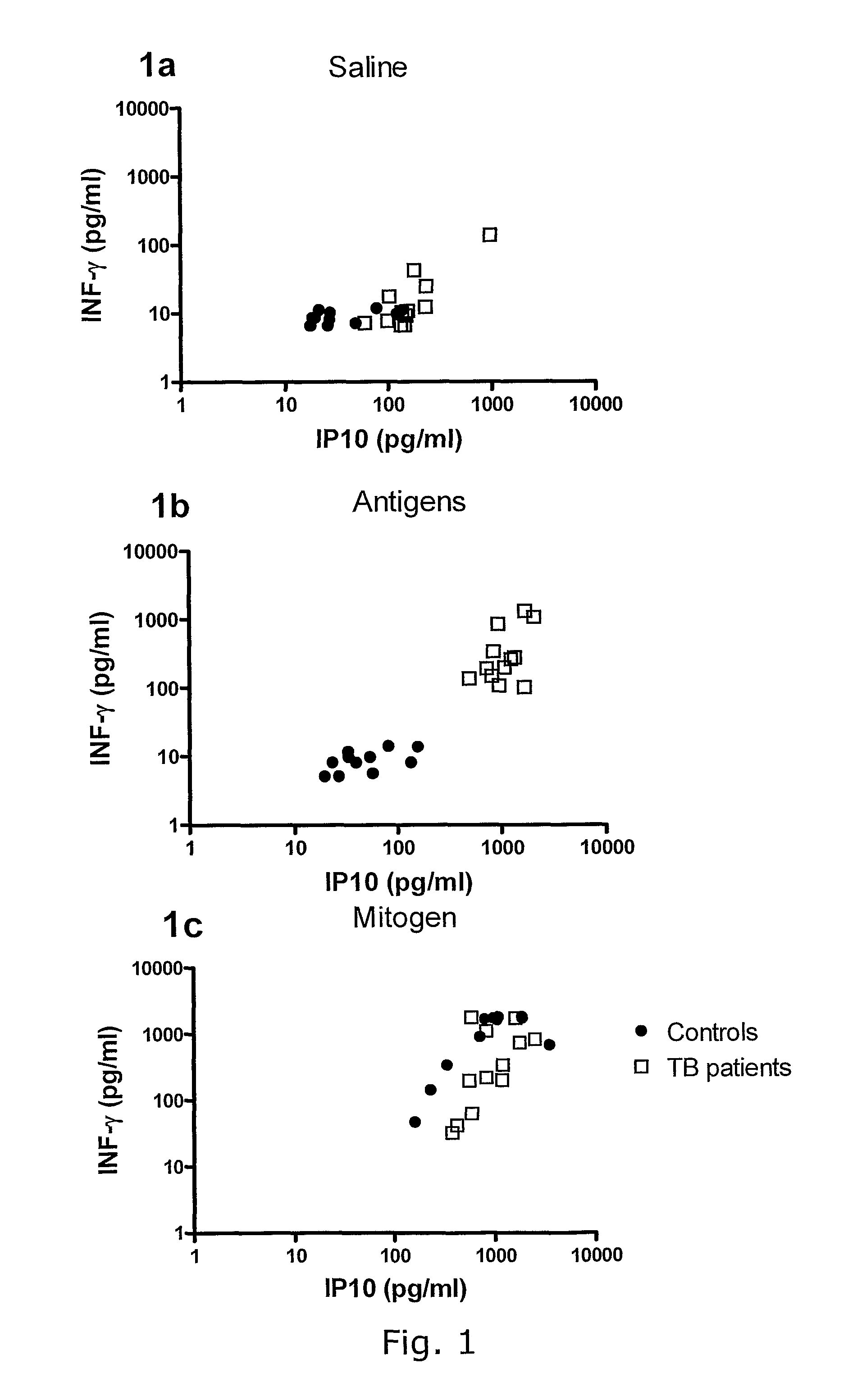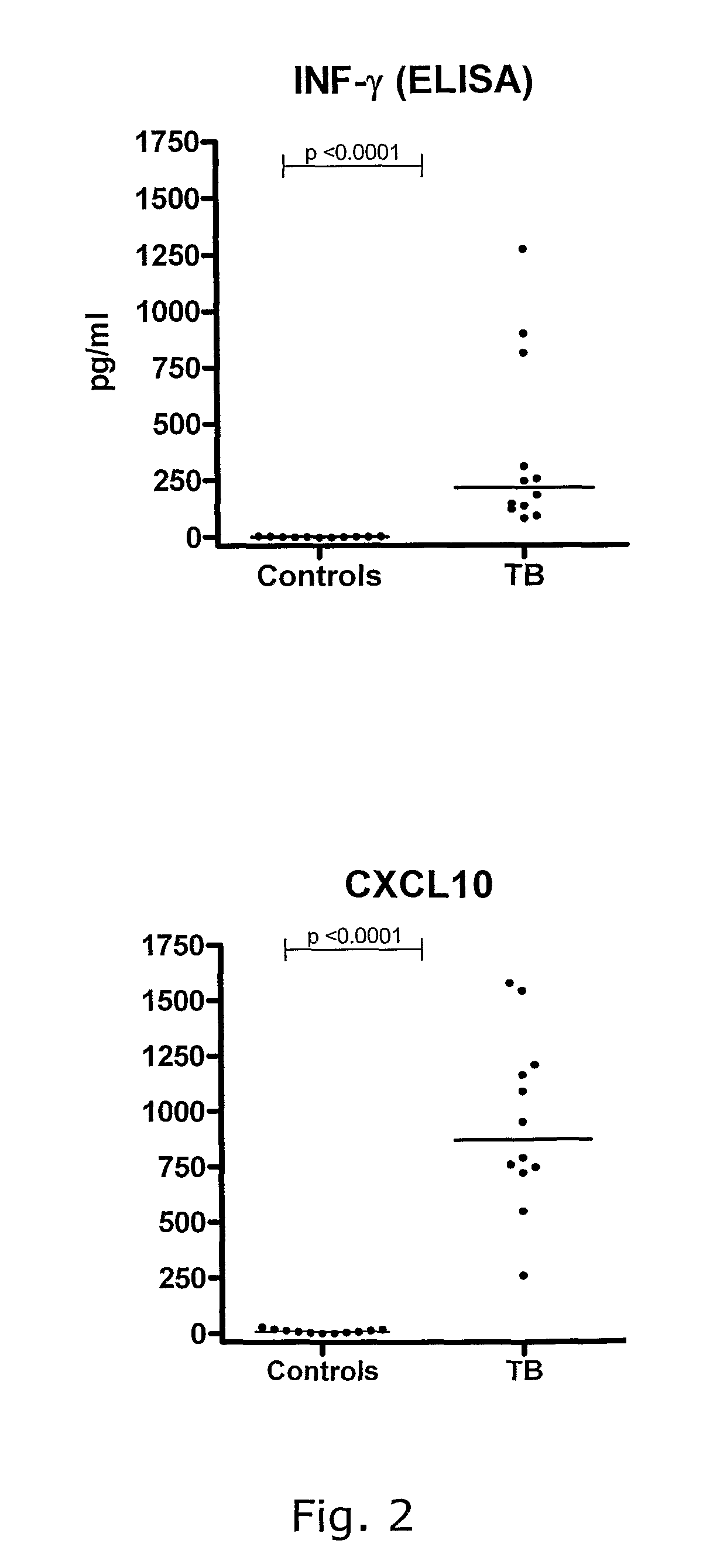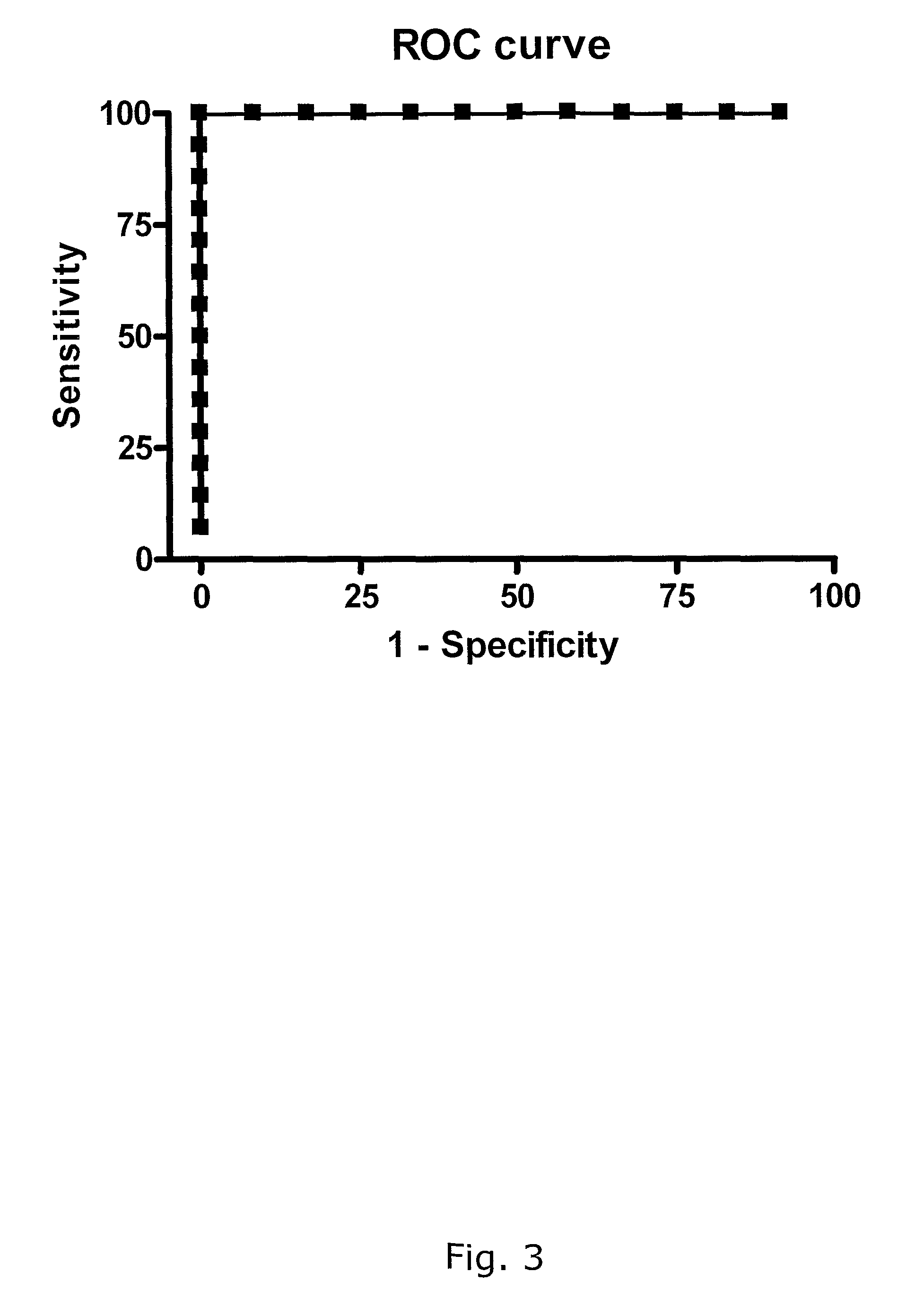IP-10 based immunological monitoring
a technology of immunological monitoring and ip-10, applied in the field of immunological assays, can solve problems such as impaired sensitivity, test failure to demonstrate ability, and impaired specificity of tests
- Summary
- Abstract
- Description
- Claims
- Application Information
AI Technical Summary
Benefits of technology
Problems solved by technology
Method used
Image
Examples
example 1
[0416]High Levels of Plasma IP-10 are Induced by Stimulation of Whole Blood with M. tuberculosis Specific Antigens from Patients Infected with M. tuberculosis
[0417]We tested whole blood from 12 patients with sputum positive lung tuberculosis from Denmark (n=2) and Guinea Bissau (n=9), and 11 healthy non-TB exposed Danish controls (young doctors, researchers and students from the Department of infectious diseases and clinical research unit at Hvidovre Hospital). No patient was HIV positive. The study was approved by the ethical committee of Copenhagen and Frederiksberg Commune, and the Ethical Committee of Guinea Bissau.
Results
[0418]Levels of IFN-γ and IP-10 (median values and range) in the plasma of whole blood samples incubated with Nil, Ag or Mitogen, measured by Luminex IP-10, Luminex IFN-γ or the commercial Quantiferon-IFN-γ ELISA are presented in table 1.
[0419]Production of IP-10 after incubation with M. tuberculosis specific antigens is strongly associated with the presence of...
example 2
[0424]Elevated Spontaneous IP-10 Release in Plasma of Unstimulated Whole Blood Culture (Nil Sample) from Patients with Active TB Infection; IP-10 as a Marker for Active Disease
[0425]As seen from table 1, patients with active tuberculosis had 5.6 fold higher plasma levels of IP-10 in unstimulated whole blood samples (nil) (150.9 pg / ml (61.1-991.9)) compared to healthy controls (27.1 pg / ml (17.7-140.6)) p=0.0005. There was no significant difference in plasma nil IP-10 between patients with active tuberculosis from Guinea Bissau and Denmark (p=0.67).
[0426]In conclusion: This indicates that determination of spontaneous IP-10 release in combination with antigen stimulated IP-10 release can be used to discriminate healthy individuals from patients with active TB,
example 3
[0427]Correlation Between IFN-γ and IP-10 Release
[0428]There is a strong correlation between IFN-γ and IP-10 release in whole blood culture, but IP-10 release is of higher magnitude. Individual responses to IP-10 after nil, antigen or mitogen stimulation and the corresponding ELISA IFN-γ are shown in FIG. 1a-c. There was a strong correlation between the levels of IP-10 and ELISA IFN-γ in the plasma of antigen stimulated whole blood (spearman r=0.87, 95% C.I 0.71 to 0.95, pb) and in the plasma of mitogen stimulated whole blood, though not at the same level (r=0.54, 95% C.I. 0.15 to 0.78, p=0.008 (FIG. 1c).
[0429]In conclusion: IP-10 and IFN-γ release in whole blood culture correlates, but IP-10 release is of higher magnitude. This makes IP-10 a better marker than IFN-γ in in-vitro TB tests.
PUM
| Property | Measurement | Unit |
|---|---|---|
| volume | aaaaa | aaaaa |
| time | aaaaa | aaaaa |
| time | aaaaa | aaaaa |
Abstract
Description
Claims
Application Information
 Login to View More
Login to View More - R&D
- Intellectual Property
- Life Sciences
- Materials
- Tech Scout
- Unparalleled Data Quality
- Higher Quality Content
- 60% Fewer Hallucinations
Browse by: Latest US Patents, China's latest patents, Technical Efficacy Thesaurus, Application Domain, Technology Topic, Popular Technical Reports.
© 2025 PatSnap. All rights reserved.Legal|Privacy policy|Modern Slavery Act Transparency Statement|Sitemap|About US| Contact US: help@patsnap.com



